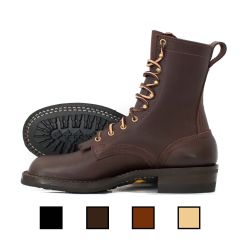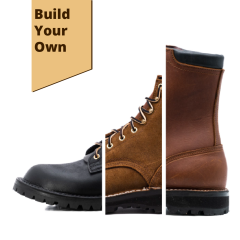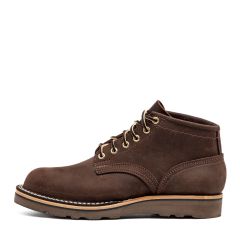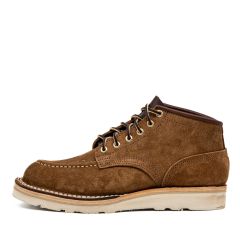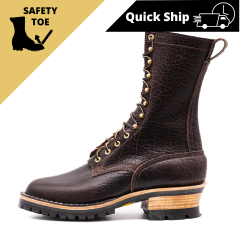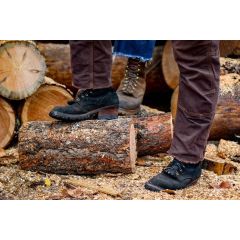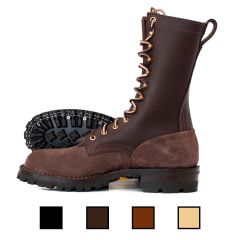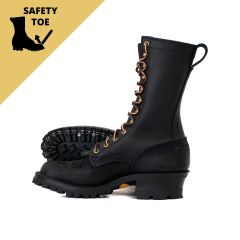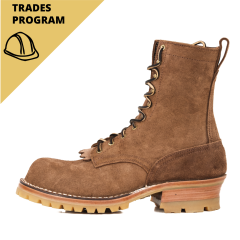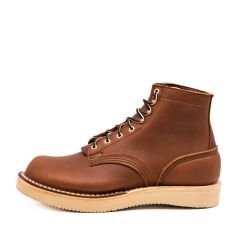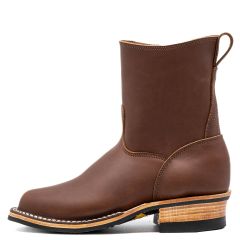Boots For Winter
Why Choosing The Right Winter Boots Matters
Winter boots are more than just a seasonal accessory—they’re essential to surviving and thriving in harsh winter conditions. The wrong pair can leave you battling cold, wet feet or struggling to maintain stability on icy terrain. Winter challenges demand specialized footwear that can keep you warm, dry, and safe, no matter the weather.
When temperatures drop, and the snow starts piling up, your feet face unique risks. Prolonged exposure to cold can lead to discomfort, reduced circulation, or even frostbite. Meanwhile, poorly designed boots without proper traction can result in slips, falls, and injuries. The right winter boots serve as your first line of defense, ensuring your feet stay protected from the elements and potential hazards.
But it’s not just about protection—it’s also about performance. Whether trekking through deep snow, running errands in slush, or working long hours outdoors, well-made winter boots provide the support and comfort you need to get the job done. A good pair isn’t just footwear; it’s peace of mind at every step.
Key Features To Look For In Winter Boots
Not all winter boots are created equal. To ensure your feet stay warm, dry, and comfortable through the coldest months, it’s essential to understand the features that truly matter. Here are the key elements to consider when shopping for winter boots:
- Insulation for Warmth: Winter boots should keep your feet cozy even in freezing temperatures. Look for options with high-quality insulation that traps heat without adding excessive bulk. The right insulation level depends on your activity—outdoor workers may need heavy-duty insulation, while lighter insulation suits casual wear.
- Waterproofing and Weather Resistance: Wet feet in winter are a recipe for discomfort and cold. Waterproof materials, like full-grain leather, ensure your boots keep moisture out. Seam-sealed designs and gusseted tongues also help protect against snow and slush intrusion.
- Traction and Grip: Navigating icy sidewalks and slippery trails demands superior traction. Outsoles made from durable rubber with aggressive tread patterns provide the grip needed to prevent slips and falls. Features like Vibram soles enhance stability on varied terrain.
- Durability for Longevity: Winter boots should be tough enough to handle harsh conditions year after year. Premium materials, such as thick leather and reinforced stitching, ensure your boots won’t wear out under pressure. High-quality construction translates to long-term reliability.
- Comfort and Fit: Winter boots should protect and support your feet. Cushioned insoles, arch support, and ankle stability are crucial for all-day comfort. A snug but not tight fit helps retain warmth while allowing room for thicker winter socks.
- Ease of Use: Features like pull tabs, zippers, or speed hooks make winter boots easy to slip on and off, even when wearing gloves—convenience matters when the cold weather hits.
Benefits Of Investing In Quality Winter Boots
When it comes to winter footwear, cutting corners can lead to discomfort, wasted money, and even injury. Investing in a pair of high-quality winter boots offers unmatched advantages that go beyond immediate comfort. Here’s why choosing the best is worth every penny:
Unparalleled Warmth And Comfort
High-quality winter boots are designed with advanced insulation, ensuring your feet stay warm even in sub-zero temperatures. Unlike cheaper alternatives that feel stiff or bulky, premium boots provide a snug fit that maximizes heat retention without sacrificing comfort. Whether braving the cold for work or leisure, these boots keep your feet cozy and comfortable all day.
Superior Durability
Top-tier winter boots are built with robust materials such as full-grain leather and reinforced stitching, designed to endure years of wear and tear. Cheaper options often fall apart after a harsh winter, but quality boots can easily handle snow, ice, and rugged terrain. This long-lasting durability makes them cost-effective, saving you from frequent replacements.
Enhanced Safety
Navigating icy sidewalks and slippery paths can be hazardous, but quality winter boots have advanced traction technologies like Vibram soles and deep treads. These features ensure a secure grip, reducing the risk of slips and falls in unpredictable winter conditions, whether hiking or commuting. Safety is never compromised with a dependable pair of boots.
Reliable Protection Against The Elements
Premium winter boots are designed to keep your feet dry and protected. They feature waterproof membranes and seam-sealed construction, which prevent moisture from seeping in, while insulated linings shield your feet from biting cold. Even in the harshest snowstorms, quality boots maintain a barrier against the elements, ensuring maximum comfort.
All-Day Support
Winter boots aren’t just about warmth—they’re about maintaining comfort and health for your feet. Cushioned insoles, ergonomic designs, and proper arch support reduce foot fatigue during extended wear. This level of support makes them ideal for long days outdoors, ensuring you remain comfortable no matter the activity.
Timeless Style
Investing in quality doesn’t mean compromising on aesthetics. Many high-end winter boots are designed with a perfect balance of functionality and style, offering classic looks that pair well with various outfits. This ensures you stay protected and look polished at work, on a hike, or running errands.
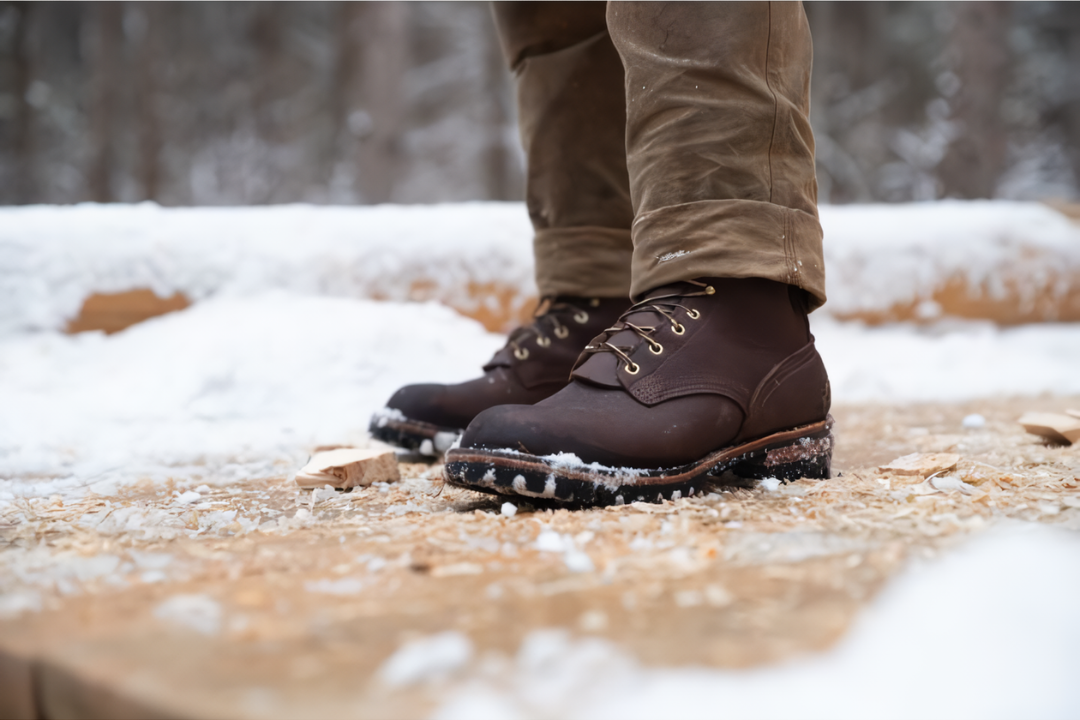
Top Winter Boots For Durability And Comfort
When finding the perfect pair of winter boots, examples from trusted brands can help narrow your choices. Below are some exceptional options that excel in warmth, protection, and durability:
WaterWork® - Insulated 11.5 D - Ready To Ship!
The WaterWork® - Insulated 11.5 D boot offers a versatile option for winter wear with its durable construction and premium leather. Designed for rugged use, these boots ensure long-lasting performance in cold and snowy conditions. Its sleek design makes it a great blend of functionality and style for winter enthusiasts.
BuilderPro® FrostGuard - Polarthin Insulation - Quick Ship!
This boot is tailored for individuals needing superior insulation during harsh winter conditions. The BuilderPro® FrostGuard - Polarthin Insulation design offers warmth and comfort, while its robust build guarantees excellent traction and durability. It's ideal for professionals or anyone requiring dependable footwear for long hours outdoors.
WaterWork® - Insulated - Quick Ship!
These WaterWork® - Insulated boots are crafted to handle wet and cold environments effectively. With waterproof features and added insulation, they are a reliable choice for winter tasks involving water exposure. Their high-quality materials ensure longevity, even under constant use in adverse conditions.
Insulated Ridgeline Hiking Boot - Quick Ship
The Insulated Ridgeline Hiking Boot is perfect for winter hikers and combines warmth, support, and durability. Its insulated design protects feet from the cold while providing excellent grip on icy or uneven terrain. This boot is a must-have for outdoor enthusiasts who demand comfort and reliability.
Side-Zip Station Boot
The Side-Zip Station Boot is an excellent winter choice for those prioritizing convenience without compromising durability. The side zipper design allows easy on-and-off functionality, ideal for fast-paced environments. Its rugged build and winter-ready features make it a dependable option for varying needs.
Styling Winter Boots Without Sacrificing Functionality
Winter boots don’t have to compromise style for practicality. You can stay warm and secure with the right pair while looking polished and put-together. Here’s how to achieve a balance of fashion and function during the colder months:
Choose Timeless Designs
Classic boot styles, such as those made from full-grain leather or featuring clean lines, are versatile and work well with various outfits. Opt for neutral colors like black, brown, or tan, which pair seamlessly with casual and professional attire. Timeless designs elevate your look and ensure your boots remain stylish season after season.
Match With Winter Essentials
Styling winter boots is easy when you coordinate them with seasonal staples like wool coats, scarves, and gloves. Pair boots with fitted jeans or thermal leggings and a parka for a rugged yet fashionable appearance. If you prefer a more polished look, team them with tailored trousers and a structured overcoat for a warm and elegant outfit.
Prioritize Fit And Proportion
Well-fitted boots enhance comfort and contribute to a sleek overall appearance. High-cut boots can be styled with slim or tapered pants tucked in to create a streamlined silhouette. For shorter boots, pairing them with cuffed pants or layering thick socks over leggings can add a casual, cozy vibe.
Incorporate Accessories
Accessories like patterned socks, colorful laces, or boot cuffs can add personality to your winter footwear without diminishing functionality. These small details help elevate your outfit while ensuring your boots remain practical for cold-weather wear.
Blend Performance Features With Aesthetic Appeal
Many high-quality winter boots feature modern designs that integrate practical elements like waterproofing and insulation without looking bulky. Look for options with sleek profiles and minimal embellishments, allowing you to maintain a sophisticated appearance while benefiting from top-tier functionality.
Caring For Your Winter Boots To Ensure Longevity
Investing in a quality pair of winter boots is the first step; proper care is essential to maximize lifespan and performance. Winter conditions can be harsh on footwear, but with the proper maintenance routine, you can keep your boots looking and functioning like new for years. Follow these care tips to protect your investment:
- Clean Regularly to Remove Dirt and Salt: Winter boots are often exposed to dirt, slush, and road salt, which can degrade materials if left untreated. After each use, wipe your boots with a damp cloth to remove residue and prevent buildup. For stubborn stains, use a specialized leather cleaner or mild soap to scrub affected areas gently.
- Condition Leather to Prevent Drying and Cracking: Cold temperatures and moisture can dry out leather, leading to cracks and reduced durability. Apply a high-quality leather conditioner every few weeks to keep the material supple and moisturized. Conditioning extends the life of your boots and enhances their water resistance.
- Protect Against Moisture with Waterproofing Treatments: Even waterproof boots benefit from the occasional reapplication of waterproofing sprays or waxes. These treatments create an additional barrier against water and snow, ensuring your feet stay dry. Be sure to choose a product compatible with the material of your boots, whether leather, suede, or synthetic.
- Dry Thoroughly After Each Use: Never store wet boots, as moisture can lead to mold, odors, and material damage. After wearing, stuff your boots with newspaper or use boot dryers to absorb excess moisture. Avoid placing them near direct heat sources, which can warp the shape or damage the material.
- Store Properly During the Off-Season: When winter is over, clean and condition your boots thoroughly before storing them. Keep them in a cool, dry place, and use shoe trees or stuffing to maintain their shape. Store them in a breathable bag to prevent dust and allow air circulation.
- Replace Insoles and Check for Wear: Over time, insoles can become worn and lose their support. Replace them as needed to maintain comfort and reduce foot fatigue. Additionally, inspect the outsoles and seams for signs of wear and promptly address any minor repairs to prevent further damage.
By incorporating these simple maintenance steps into your routine, you can protect your winter boots from the elements and enjoy their benefits for many seasons.
Read also:
- How To Keep Feet Warm While Hunting: Tips And Tricks
- How To Maintain Leather Boots: Care Tips For Longevity
- Over-Conditioned Leather: Signs And How To Fix It
Frequently Asked Questions About Boots For Winter
What should I consider when buying winter boots for extreme cold?
When buying boots for extreme cold, prioritize insulation that can handle sub-zero temperatures. Look for materials that retain heat without adding excessive bulk to keep your feet comfortable. Waterproofing is also critical to prevent snow or slush from soaking in.
Can winter boots be stylish and functional at the same time?
Yes, many modern winter boots are designed to combine functionality with aesthetic appeal. Neutral colors and minimalist designs can make boots versatile enough for casual and professional wear. Look for pairs that blend sleek profiles with advanced weather-resistant features.
Are winter boots suitable for hiking?
Certain winter boots are specifically designed for hiking, with features like aggressive treads and lightweight yet durable construction. They offer insulation and waterproofing to keep feet warm and dry on snowy trails. Choose a pair with ankle support for added stability on uneven terrain.
How do I ensure my winter boots fit properly?
A proper fit allows for snug comfort while leaving room for thick socks. Avoid boots that feel too tight, which may restrict circulation, leading to cold feet. Try on boots with the socks you plan to wear to get the best fit.
What is the best way to break in winter boots?
To break in winter boots, wear them indoors with thick socks for short periods over a few days. This allows the material to adjust to the shape of your feet without causing blisters. Gradual use ensures comfort when transitioning to outdoor wear.
Can I wear winter boots in rainy conditions?
Most winter boots are waterproof or water-resistant, making them suitable for rainy weather. However, prolonged exposure to rain may require additional waterproof treatments to maintain protection. Rubber or leather boots with sealed seams perform best in wet conditions.
What makes winter boots different from regular boots?
Winter boots are designed specifically for cold and wet conditions. They feature insulation, waterproofing, and enhanced traction. Regular boots may lack these critical features, making them unsuitable for snow or icy surfaces. Winter boots prioritize warmth and protection while maintaining durability.
Do I need to replace winter boots every season?
With proper care and maintenance, high-quality winter boots can last for several seasons. Regular cleaning, conditioning, and checking for wear can significantly extend their lifespan. Replacement is only necessary if the boots lose insulation, waterproofing, or structural integrity.
What materials are best for winter boots?
Materials like full-grain leather, rubber, and synthetic waterproof membranes are ideal for winter boots. These materials provide a combination of durability, water resistance, and insulation. Suede may require additional care to protect against snow and moisture.
Are there specific socks that pair best with winter boots?
Thick, moisture-wicking socks made from wool or thermal blends work best with winter boots. These socks keep your feet warm while preventing sweat buildup, which can cause discomfort. Avoid cotton socks, which retain moisture and can lead to cold, damp feet.
